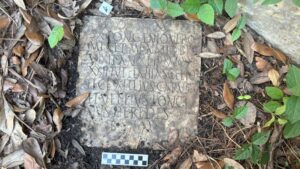Archaeologists might have found the oldest Stone Age burial site in northern Europe. The 6,500-year-old site sits just outside the Arctic Circle in Finland, but there’s a problem. There’s no evidence of any human remains.
Tainiaro
During excavations of Tainiaro in Lapland in the 1980s, archaeologists found thousands of artifacts, including animal bones, stone tools, and pottery. The site comprised 127 pits of various sizes filled with sediment.
The pits show signs of burning and traces of red ochre, a substance regularly used in Stone Age burials. Researchers were fairly confident that they had come across a cemetery, but there were no skeletons to back up their theory.

The location of the archaeological site. Photo: Hakonen et al., 2023
In a new study, researchers argue that because the soil in the region is very acidic. No organic material buried in the soil would survive for more than 1,000 years. If they are correct, this makes it one of the largest (and oldest) Stone Age cemeteries in northern Europe.
Their findings could change our perception of human movement and settlement at the time. Previously, experts believed that this area was almost uninhabited because of the incredibly harsh environment.
“We expect to find less interesting stuff going on the farther north we go,” Aki Hakonen, co-author of the study, told Newsweek. “But the north is a magical place, and it holds many surprises. If archaeology reorients itself to consider the north not as a periphery but as a core place of importance, we would gain access to a much more thorough understanding of humanity’s past.”

Examples of pit features at Tainiaro. Photo: Hakonen et al., 2023
Why do they think it’s a graveyard?
First, they compared the pits to hundreds of graves at 14 Stone Age burial sites. Similarities, such as the shape, rounded edges, the use of red ochre, and artifacts inside, indicate that at least 44 of them were graves.
Researchers think that the people at Tainiaro were buried on their backs or sides with their knees bent. The pits date to the fifth millennium BC.
The pits that do not show evidence of a burial were most likely hearths and burning pits. The team is now using ground penetrating radar to try and identify more graves, as they have only excavated one-fifth of the total so far. If they manage to find one completely covered in red ochre, it may still contain human remains. In large quantities, red ochre can act as a preservative.






